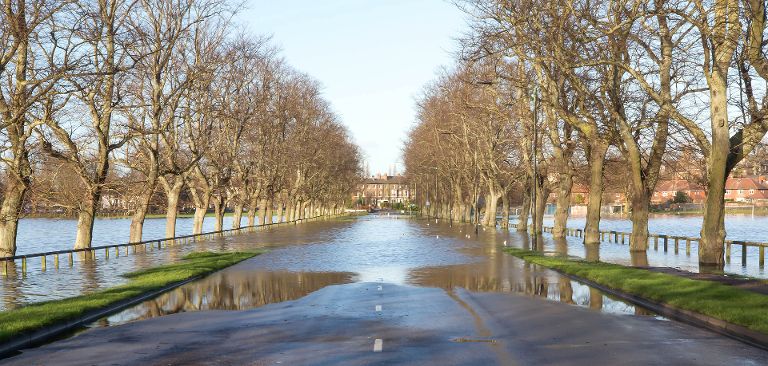Adapting to the risk of flooding - a case study
A case study on the impact of flooding and value of adaptation.
The following story has been adapted from a British Red Cross case study and comes from a collection of research that has been undertaken to understand people's experiences of flooding and the risk of future flooding. The research project brings together the experiences of people who have lived through flooding, as well as communities at greatest risk of future flooding.
“I had a phone call…. an automated message saying it was a ‘red flood alert’ and that I should press a button to get more information. I honestly thought it was a scam, so I hung up.”
Mother-of-three Leanne lives in one of the 800 homes damaged by catastrophic floods that devastated parts of Rhondda Cynon Taf in 2020. During the peak of Storm Dennis, 61 Flood Alerts, 89 Flood Warnings and two Severe Flood Warnings were in force, but none of that prepared Leanne for what was about to happen to her home.
The automated call that Leanne had received warning her of the flood was legitimate, but believing it was a scam, she chose to stay in her home. Disaster then struck later that night as water began to rise quickly through her cottage, and Leanne and her son George had to scramble to get out in time. Unfortunately, due to the extent of the damage caused by the flood, they were unable to move back into their home for six months.
Despite this, Leanne still felt luckier than others in her community, as she was eventually able to restore her home and move back in.
“One of my neighbours has packed up and left,” she says sadly. “They couldn’t bear staying in their house after what happened. I don’t feel that way. I love my house. I still love living here. I just have to take extra special measures to make sure I’m better prepared if it ever happens again.”
Leanne’s ‘extra-special’ measures include keeping paperwork and important documents upstairs and making sure keys are accessible in an emergency.
Leanne has also made further adaptations to her home, including changing the grass in her garden to pebbles to reduce the possible damage in the event of another flood. As well as this, the local council has provided her with floodgates for the front and back door, which can be attached to the door as soon as there is a risk of rising water. Leanne also now has absorption bags which can be put down the toilet to stop sewage water from coming into the house.
These adaptations, which could be relevant for many homes and community spaces at risk of flooding, have given Leanne some peace of mind, and she has since been happily living back in her cottage for over two years.

The latest Intergovernmental Panel on Climate Change (IPCC) report on impacts, adaptation and vulnerability, published in 2022, shows growing evidence of climate impacts, such as flooding and drought, that can be attributed to climate change caused by human activity. It also shows that severe weather and climate risks are expected to occur sooner and at lower warming levels than previously thought. Some communities are already finding ways to make themselves and their residents more resilient to flooding and Leanne’s story shows the importance of doing so.
Ellie Murtagh, British Red Cross UK Climate Adaptation Lead said: “Insights like those provided by Leanne help show the reality of the impact of flooding, and also what can be done. British Red Cross is working with our staff, volunteers and the communities we support to help identify climate risks and empower people to take action.”
With partners, the British Red Cross has developed a Community Resilience in Urban Areas toolkit. This was created with communities in Northern Ireland who had experienced more severe and frequent flooding. The Red Cross are also working with people in six London boroughs to mobilise local knowledge on climate risks and enable local people to be more involved in local emergency planning. Recently a community campaign in Barking and Dagenham led to the opening of a 10-hectare nature reserve, a valuable green space in an area that is in the top 10% of the UK for heatwave and extreme heat risk.


